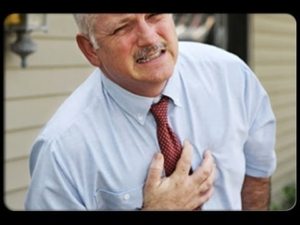The jarring news from your physician is that you’ve suffered a heart attack. But you’ve survived. In fact, it has been recently estimated that half of people who have had a heart attack suffer a “silent” heart attack- meaning it occurred without typical symptoms and without them even knowing! However, by taking the proper steps going forward you’ll have a chance to turn this harrowing medical event into a wakeup call that can result in a healthier lifestyle and improved longevity.
Heart disease is the leading cause of death in men and women, and the incidences of cardiac events are expected to continue rising. However, now that you’re a part of the statistics, the priority shifts to avoiding that second, potentially deadly heart attack – what the medical community refers to as “secondary prevention”.
By following the proper protocols, it’s possible to not only return to a normal life, but to also reach a new level of overall health and well-being.
Recovery Begins in the Hospital
While every heart attack is unique, recovery always often starts in the hospital. It’s at this critical juncture that questions must be asked, gameplans are formulated and the doctor-patient relationship is established. Yes, you’re undoubtedly frightened and confused, but now is the time to ask questions and build rapport with cardiac experts. Recovery could take months, depending on the severity, so it’s vital to know upfront the changes to your medications and the expectations once you’re released from the hospital.

Image via YouTube.com
Cardiac Rehabilitation
Upon being discharged from the hospital, a structured cardiac rehabilitation program helps ensure that you don’t return anytime soon and that your short and long term cardiovascular outlook is improved. This stage of recovery consists of a medically supervised program that educates, trains and counsels patients on the proper steps for achieving improved cardiovascular health. Subjects addressed should include heart healthy dietary options, suggested physical activities and stress reduction tips. Rehab is a vital informational conduit between that time when victims are hospitalized and when they return to a daily routine featuring less guidance and supervision. It also serves a very valuable role in giving some understandably frightened patients the confidence to return to a normal, active lifestyle.
Rethink Your Diet
Although every situation differs, there’s a chance that a lifetime of poor dietary choices contributed to your present health crisis. Fortunately, it’s never too late to make changes that lead to ideal weight, cholesterol, inflammatory mediators, and blood pressure. And while shifting eating habits isn’t easy, it’s hardly a process that is too complex to comply with. You’ve known for a lifetime the value of replacing saturated fats and fast foods with a diet rich in plants, beans and healthy proteins, such as salmon. Now more than ever is the time to exercise that knowledge in the form of heart-healthy choices. It is often helpful to work with a qualified nutritionist to plan an appropriate dietary regimen for you.
Get Moving
True, the mere suggestion of exercise following a heart attack is intimidating. And you’ll need to consult your physician before resuming any activity. However, it’s important to gradually begin moving once you’ve gotten the green light. Any low-impact motion, like walking, swimming and riding a stationary bike, provides myriad benefits for rehabbing patients. A routine exercise regimen can help strengthen the heart muscle, shed unnecessary pounds and relieve stress at a most stressful period of life. With the help of a cardiac rehabilitation program as noted above, these goals can be attained.
Ditch Bad Habits
Your cardiovascular system has just sent you a clear message. Heed it today, because you may not get another chance to shift the course of your health and welfare. No, it won’t happen overnight, but seizing control of your future means waving bye-bye to fast food, a sedentary existence and cigarettes. Smoking damages artery linings and causes a buildup of plaque that restricts blood flow – there are no redeeming qualities or health benefits to smoking. Continuing to light up post-heart attack dramatically increases the likelihood of a second, more destructive cardiac event.
Take Care of Your Mental Health
Enduring a heart attack can be debilitating in ways that transcend the physical constructs of your body. It can also take a toll on your psyche, leaving you concerned about the future and questioning your ability to be the same person you were prior to the event. Anxiety and depression, while completely understandable, can also negatively impact your rehabilitation plans. If you’re struggling to focus on personal relationships and the habits needed to improve your cardiovascular health, seek out the assistance of a qualified mental health professional.
Know the Signs
Since early detection is so important in the pursuit of optimal health, it’s crucial to know the signs of a heart attack before it occurs. And even though you’ve already had a heart attack, this does not mean that the warning signs will be the same in the future. If you feel pressure in the center of your chest, unexplained jaw pain, shortness of breath, nausea or lightheadedness, or left arm ache, immediately call 9-1-1 to receive potentially lifesaving attention. And remember, symptoms in women can differ significantly from those in men, often being more mild and atypical- and unfortunately ignored. When it comes to matters of the heart, every second counts, so recognizing the hallmarks of a heart attack can be the difference between life and death.
Heart attacks are dangerous, frightening and all-too-common. However, they can also provide the impetus for overhauling your future health objectives and priorities. Contact Dr. Lee Marcus today to team up with a renowned cardiologist whose proactive and holistic approach to healthcare helps prevent cardiovascular issues before they become life-altering concerns.